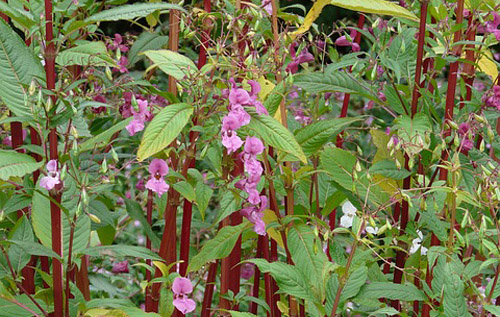Project to eradicate invasive plant from Wensum river catchment
A project that aims to eradicate Himalayan balsam from the River Wensum catchment is calling on landowners and members of the public to report balsam sightings.

Himalayan balsam flowers and seeds. Photos: Norfolk Rivers Trust
Norfolk Rivers Trust (NRT) and the Norfolk Non-native Species Initiative (NNNSI) have joined forces to reduce, and where possible, eliminate Himalayan balsam from the river catchment, which includes tributaries such as the Blackwater that runs through Reepham.
Funded by Anglian Water, the five-year project initially aims to build a database to map the spread of the plant across the river catchment.
Although it may look attractive, Himalayan balsam (Impatiens glandulifera) is an invasive, non-native plant that can spread rapidly in aquatic environments and out-compete native species.
Balsam can be detrimental to local biodiversity and, owing to its seasonal nature, can also leave entire sections of riverbanks bare during the winter months – leading to bank erosion and sedimentation of the river channel.
Himalayan balsam was introduced as a garden plant in the early 19th century and first recorded in the wild in 1855. It is now widespread in the UK, especially along urban rivers. It spreads solely by seeds, which are small and easily carried by wind or water.
The plant is still in full flower at the moment, so is very obvious to spot, said Georgia Waye-Barker, NRT’s evidence and engagement co-ordinator.
Each plant can produce around 800 seeds that are launched from exploding seedpods up to seven metres from the plant – these can survive and travel along watercourses which means this species can easily spread along rivers and streams.
The project aims to bring together and collaborate with many organisations, landowners and river users – all with a common goal to improve their local river.
With the project spanning several years (until 2025) and manual pulling of Himalayan balsam as the preferred method of control, there is plenty of opportunity to get involved:
- keep an eye out for upcoming events HERE or send an email to be added to the list of volunteers
- download a Himalayan balsam quick identification sheet HERE.
- report a sighting HERE (select “Open in browser”)
- report balsam control work HERE (select “Open in browser”)

